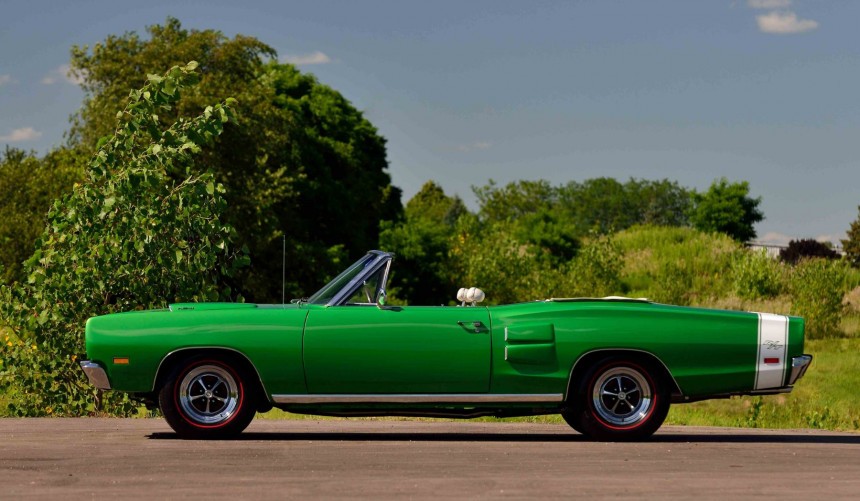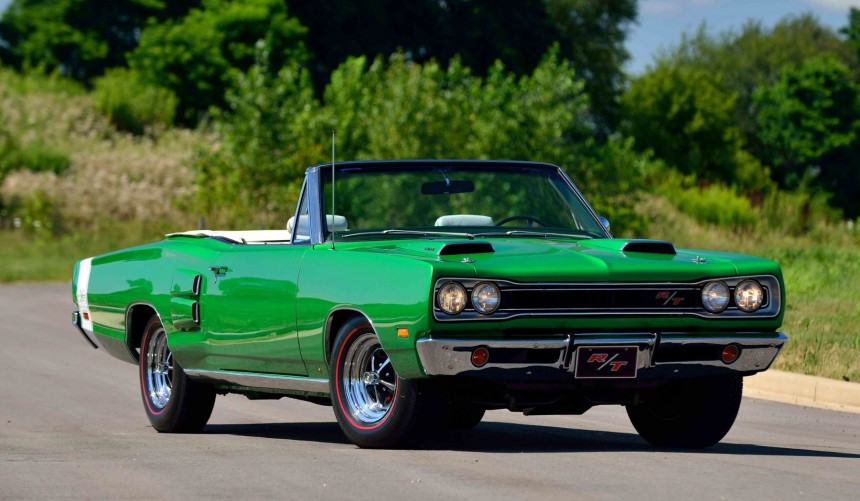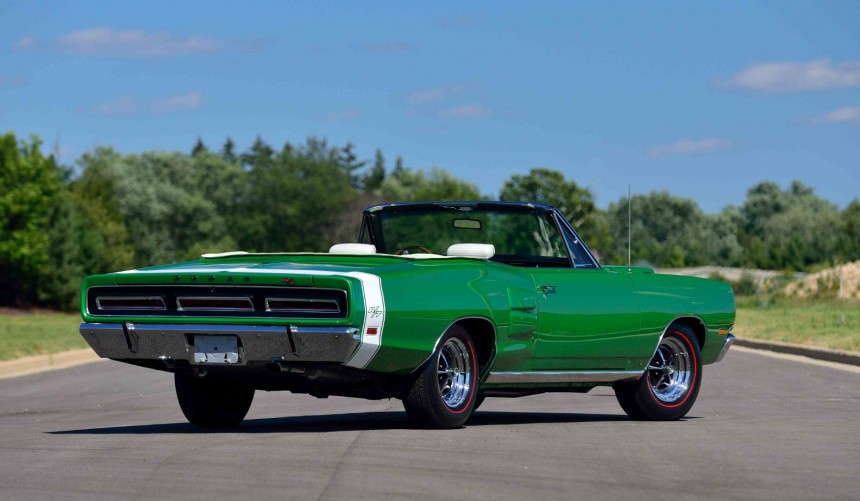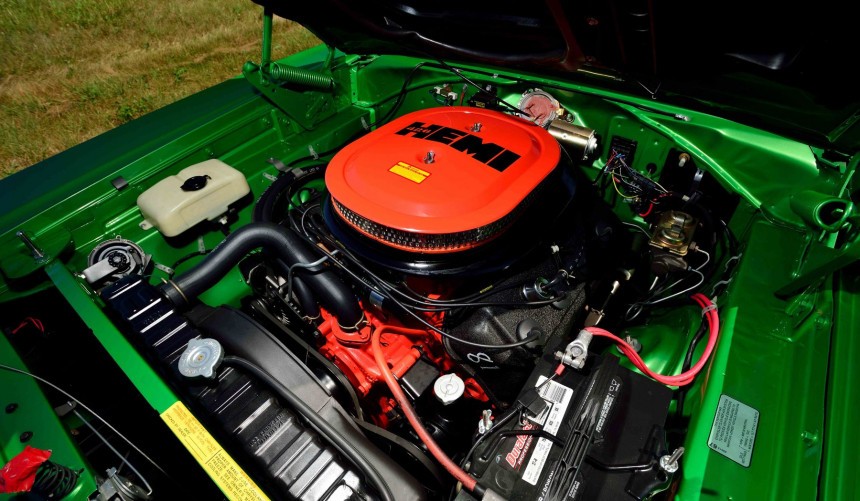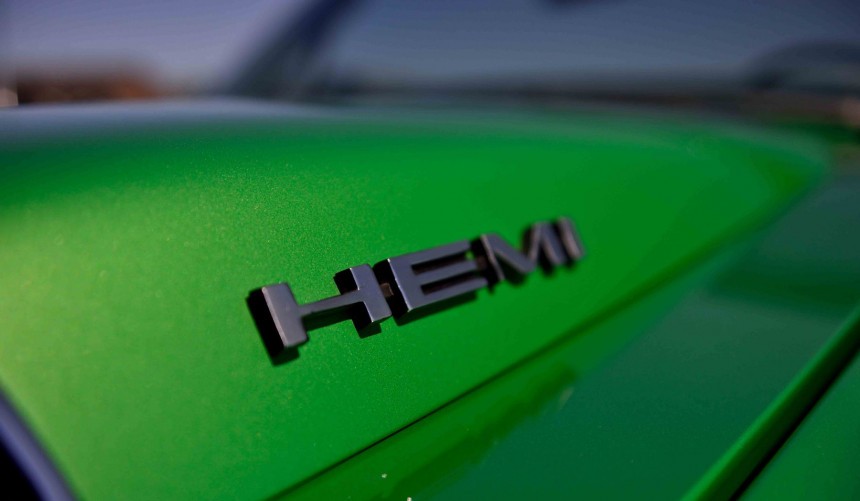With an extremely low production figure, the gorgeous 1969 Dodge Coronet R/T 426 HEMI is now one of the world's rarest, most expensive convertible muscle cars.
.In 1969, America witnessed the culture-shifting Woodstock festival and Neil Armstrong's epic stroll on the surface of our moon. Those two events alone were enough to feel proud, but American car enthusiasts had many other reasons to be grateful for.
That year, the muscle car war was in full swing. However, unlike an actual war, Detroit's fierce competition for dominance in the popular muscle car market only brought excitement to those passionate about powerful yet affordable US-built rides.
From the Cobra Jet Fords and Mercurys to the army of HEMI-powered Mopars (to name a few), the variety of high-horsepower, American-made machines was absolutely mind-blowing.
But, while 1969 was one of the muscle car's best years in terms of sales, the vast majority of them were ordered in the standard coupe body.
More than five decades later, the few sold as convertibles would become some of the rarest, most expensive muscle cars of all time, and the best example is the Dodge Coronet R/T 426 HEMI.
The Coronet (which means small crown) was one of the first Dodge models launched after the Second World War. The first-generation lineup debuted in 1949 and was produced until 1952 in several body styles, including a two-door convertible.
Like its 1969 successor, it was gorgeous, but due to its higher price tag (among other reasons), it didn't sell well at all.
Therefore, when Dodge introduced the revised second- and third-generation models in 1953 and 1955, respectively, a drop-top version was absent.
Things changed in 1957 when the Coronet was thoroughly redesigned, and even if the convertible was never as popular as the other versions, it remained part of the lineup until Dodge discontinued the model in 1959.
.
After a six-year hiatus, the Coronet was revived in 1965. The fifth and unquestionably most famous generation of the Coronet hit the streets as an intermediate that could be had in a wide range of configurations, including a two-door convertible.
Those who craved a top-less driving experience could opt for either the mid-level Coronet 440 trim or the range-topping 500. The engine offering was plentiful for both trims and for the 1966 model year, it included the newly-introduced 426 HEMI in two distinct output configurations (365 or 425 hp).
In 1967, the Coronet received a facelift, and the newly-introduced R/T (Road/Track) became the lineup's defining muscle car trim. Available only as a two-door hardtop or convertible, it offered the 440-ci (7.2-liter) Magnum V8 as standard, or the 426 HEMI as a $908 ($8,191 today) option. While a year earlier, the Elephant engine could be fitted on any Coronet trim, from 1967 onwards, it was only available on the R/T.
One year later, Dodge went for another comprehensive redesign of its popular intermediate, making it even more eye-catching. Though muscle car enthusiasts were given a new, budget-friendlier alternative called Super Bee, those who wanted a powerful convertible went either for the standard or HEMI-equipped R/T.
Encouraged by the strong sales of the R/T during the previous model years, Dodge introduced another series of improvements for 1969, giving birth to the most stunning version of the Coronet R/T convertible and one of the sexiest drop-top muscle cars of all time.
Like its 1968 predecessor, the 1969 R/T convertible featured a boxy, mean-mugging front fascia exquisitely complimented by a Coke bottle-esque rear end. It was a gorgeous design that buyers went nuts for – as highlighted by the strong sales figures of the entire lineup.
The changes that made the '69 look even better included a redesigned, slightly angular grille that replaced the flat one, optional side vents on the rear quarter panels, and a redesigned rear panel with three horizontal tail lights. Moreover, the rare, HEMI-powered cars received a new, standard hood that featured two aggressive-looking fiberglass scoops. This hood was also available on Magnum-powered cars but as an expensive option.
Mechanically, the R/T received thicker torsion bars up front, longer leaf springs out back, and Hurst shifters – when equipped with the four-speed manual transmission.
For our dear readers that aren't familiar with the mighty 426 HEMI, let me take a moment and explain why it's still one of the greatest engines ever built.
Initially, the Elephant (as it is fondly remembered) was developed as a race engine for NASCAR. It debuted in 1964 in the engine bay of the Plymouth Belvedere and was so dominant that the competition's governing body outlawed it for the following season.
In 1966, Chrysler introduced the street version in several of its brands' models, and until it was discontinued after the 1970 model year, it was one of the most powerful muscle car engines of them all.
Built around a chunky cast-iron block equipped with forged internals, the 426 HEMI, in its most potent street configuration, was rated at 425 hp and 490 lb-ft (664 Nm) of torque. However, it's now common knowledge that Chrysler purposely underrated its output to keep insurance premiums at bay since countless dyno tests have proven that, in reality, it was capable of delivering closer to 450 hp.
That being said, buyers who wanted to have a 1969 Coronet R/T convertible equipped with a HEMI had to pay an additional $330 ($2,759) for the drop-top option and another $718 ($6,003 today) for the Elephant engine. If we add the $3,199 ($26,745) sticker price of a standard Coronet R/T coupe, it becomes easier to understand why Dodge only sold ten of these fantastic cars.
Of the ten HEMI-powered R/T convertibles, four came with D21 four-speed manuals, and the rest received three-speed TorqueFlite automatics.
The Coronet R/T HEMI returned for the 1970 model year when the entire lineup received a dubious facelift. Corroborated with a slight price hike, this led Dodge to produce only two 1970 Coronet R/T HEMIs were built.
While it isn't as rare as its successor, the 1969 R/T 426 HEMI is unquestionably the best-looking Coronet convertible of them all. With only a few examples known to have survived, it's currently one of the most sought-after muscle cars from the golden age.
These days, surviving examples rarely pop up at auctions, but when one of them goes under the hammer, it demands more than a brand-new Ferrari. The stunning green R/T HEMI featured in this article was auctioned off at a Mecum event in 2016, fetching $687,500.
That year, the muscle car war was in full swing. However, unlike an actual war, Detroit's fierce competition for dominance in the popular muscle car market only brought excitement to those passionate about powerful yet affordable US-built rides.
From the Cobra Jet Fords and Mercurys to the army of HEMI-powered Mopars (to name a few), the variety of high-horsepower, American-made machines was absolutely mind-blowing.
But, while 1969 was one of the muscle car's best years in terms of sales, the vast majority of them were ordered in the standard coupe body.
More than five decades later, the few sold as convertibles would become some of the rarest, most expensive muscle cars of all time, and the best example is the Dodge Coronet R/T 426 HEMI.
A long history of drop-top excellence
Like its 1969 successor, it was gorgeous, but due to its higher price tag (among other reasons), it didn't sell well at all.
Therefore, when Dodge introduced the revised second- and third-generation models in 1953 and 1955, respectively, a drop-top version was absent.
Things changed in 1957 when the Coronet was thoroughly redesigned, and even if the convertible was never as popular as the other versions, it remained part of the lineup until Dodge discontinued the model in 1959.
.
The birth of the R/T convertible
Those who craved a top-less driving experience could opt for either the mid-level Coronet 440 trim or the range-topping 500. The engine offering was plentiful for both trims and for the 1966 model year, it included the newly-introduced 426 HEMI in two distinct output configurations (365 or 425 hp).
In 1967, the Coronet received a facelift, and the newly-introduced R/T (Road/Track) became the lineup's defining muscle car trim. Available only as a two-door hardtop or convertible, it offered the 440-ci (7.2-liter) Magnum V8 as standard, or the 426 HEMI as a $908 ($8,191 today) option. While a year earlier, the Elephant engine could be fitted on any Coronet trim, from 1967 onwards, it was only available on the R/T.
Morphing into one of the sexiest drop-top muscle cars of all time
Encouraged by the strong sales of the R/T during the previous model years, Dodge introduced another series of improvements for 1969, giving birth to the most stunning version of the Coronet R/T convertible and one of the sexiest drop-top muscle cars of all time.
Like its 1968 predecessor, the 1969 R/T convertible featured a boxy, mean-mugging front fascia exquisitely complimented by a Coke bottle-esque rear end. It was a gorgeous design that buyers went nuts for – as highlighted by the strong sales figures of the entire lineup.
The changes that made the '69 look even better included a redesigned, slightly angular grille that replaced the flat one, optional side vents on the rear quarter panels, and a redesigned rear panel with three horizontal tail lights. Moreover, the rare, HEMI-powered cars received a new, standard hood that featured two aggressive-looking fiberglass scoops. This hood was also available on Magnum-powered cars but as an expensive option.
Mechanically, the R/T received thicker torsion bars up front, longer leaf springs out back, and Hurst shifters – when equipped with the four-speed manual transmission.
Only ten 1969 R/T convertibles hid a HEMI under their hoods
Initially, the Elephant (as it is fondly remembered) was developed as a race engine for NASCAR. It debuted in 1964 in the engine bay of the Plymouth Belvedere and was so dominant that the competition's governing body outlawed it for the following season.
In 1966, Chrysler introduced the street version in several of its brands' models, and until it was discontinued after the 1970 model year, it was one of the most powerful muscle car engines of them all.
Built around a chunky cast-iron block equipped with forged internals, the 426 HEMI, in its most potent street configuration, was rated at 425 hp and 490 lb-ft (664 Nm) of torque. However, it's now common knowledge that Chrysler purposely underrated its output to keep insurance premiums at bay since countless dyno tests have proven that, in reality, it was capable of delivering closer to 450 hp.
That being said, buyers who wanted to have a 1969 Coronet R/T convertible equipped with a HEMI had to pay an additional $330 ($2,759) for the drop-top option and another $718 ($6,003 today) for the Elephant engine. If we add the $3,199 ($26,745) sticker price of a standard Coronet R/T coupe, it becomes easier to understand why Dodge only sold ten of these fantastic cars.
Of the ten HEMI-powered R/T convertibles, four came with D21 four-speed manuals, and the rest received three-speed TorqueFlite automatics.
The 1969 Dodge Coronet R/T 426 HEMI today
While it isn't as rare as its successor, the 1969 R/T 426 HEMI is unquestionably the best-looking Coronet convertible of them all. With only a few examples known to have survived, it's currently one of the most sought-after muscle cars from the golden age.
These days, surviving examples rarely pop up at auctions, but when one of them goes under the hammer, it demands more than a brand-new Ferrari. The stunning green R/T HEMI featured in this article was auctioned off at a Mecum event in 2016, fetching $687,500.












